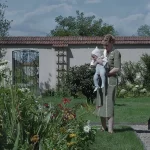Criterion Prediction #112: Cure, by Alexander Miller
Title: Cure
Year: 1997
Director: Kiyoshi Kurosawa
Cast: Koji Yakusho, Masato Hagiwara, Tsuyoshi Ujiki, Anna Nakagawa
Synopsis: There’s a series of murders taking place. Each incident is perpetrated by a different killer who turns amnesiac around the time of killing their randomly selected victims.
While Detective Takabe (Yakusho) is on the case, there’s barely any consistency in the varied homicides aside from a nebbish man who appears to suffer from short-term memory loss and that every victim is found with an “X” carved in their neck.
Critique: Thematically, with Kiyoshi Kurosawa, you get a little bit of everything. Cure is a full-blooded horror film, but the narrative has the deliberate beats of a police procedural, the tonal quality is that of a film noir, the street hewn grittiness and matter-of-fact depiction of violence lend a visceral urgency more akin to true-crime stories ground the narrative in a tangential territory.
However, the aesthetic reverberates with classic Victorian gothic atmosphere; when Detective Takabe approaches an abandoned building, we are in the most traditional of horror settings. The dread of what lurks around corners, ghastly apparitions are veiled in the corners, ominously drowned in fog and whipped with wind, while curtains billow in hallways; this woozy element that runs throughout the film can be traced back throughout the horror genre. Kurosawa’s brand is sincere and in the tradition of his influence Val Lewton, there’s a feeling of respect for the supernatural and subtly intense frissons of fear with slow-burning murkiness. Cure is dominantly moody and it feels like this was the feature that grounded his distinctive style. The irony of Kurosawa’s creative wheelhouse is that his adherence to the traditions of Japanese cinema and disciplined sense of restraint in the low angles and long takes (that could be traced to Mizoguchi and Ozu) elevate his work. Kurosawa’s relative autonomy aside his tendency toward something that is consistent with postwar Japanese cinema is a penchant for widespread devastation. There’s an unnerving feeling that the homicidal hysteria in Cure is a contagion that will continue after the credits roll, this carries into Kurosawa’s later work, Pulse, Bright Future, even 2016’s Creepy. Localized horror is a feat to accomplish but extending it with a widespread ambiguity is a singular talent not restricted to, but achieved by one of cinemas most original voices working in horror.
Why It Belongs in the Collection: There’s a lot of crossover with Criterion HVE and other reputable DVD and Blu-ray distributors. Among the Japanese films available from HVE/Image entertainment that would subsequently get a Criterion release (or both) are Pale Flower, Red Beard, The Lower Depths, Stray Dog, The Story of the Last Chrysanthemum, and over a dozen Zatoichi features. While some movies like the Stray Cat Rock, and Yakuza Papers series’ veered off toward Arrow Features, we still see some of HVE titles wander on Filmstruck (and Hulu’s Criterion Channel when it existed) which sometimes served as a preamble of future Criterion releases. And of the Kiyoshi Kurosawa films that is the only one of his titles streaming on Filmstruck right now and was distributed on DVD through HVE is his 1997 film Cure. Kurosawa’s life on Blu-ray has been diverse; his 2000 film Pulse is available on Arrow Films while Creepy, Tokyo Sonata, and Journey to the Shore were released through Master of Cinema Series. Leaving the director’s titles on HVE features–Cure, Séance, Charisma–among the three, Cure feels like the most worthy candidate.





























